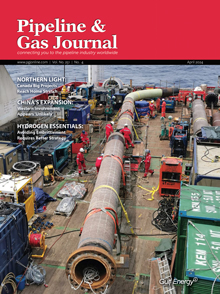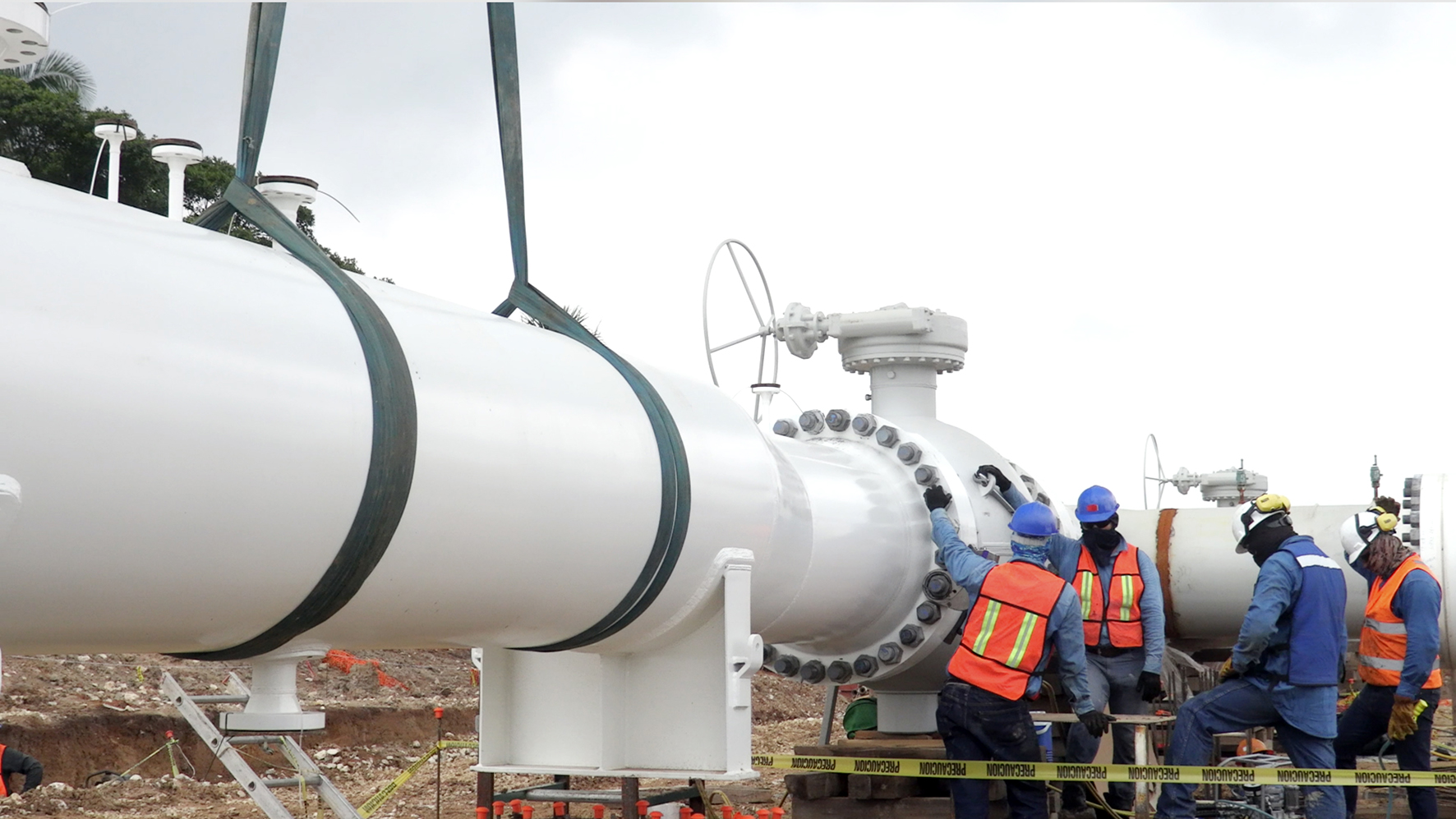Construction of Cuxtal Gas Pipeline to Boost Yucatan Economy
By Mauro Nogarin, Energy Writer
With his implementation of a comprehensive energy program for Yucatan, Mexican President Andres Manuel Lopez Obrador hopes to bolster the economic and social development of the state, along with the rest of southeast Mexico.
To that end the start-up of the Cuxtal 1 gas pipeline represents a key infrastructure project aimed at satisfying the demand for energy in this region of Mexico, which is currently growing at twice the national average: 4.1% vs 2.6%.
The new pipeline, along with two more facilities to be built before the president’s term expires, should guarantee enough natural gas to feed the current thermoelectric plants. Gas from the north of the country will be transported to Chiapas, and in the short term to Cancun, in order to meet the growing demand in the region.
This project gained support from private companies through the renegotiation of contracts, allowing the country to reduce its gas costs for the next 20 years.
Going forward, 80% of the volume of natural gas will be reserved to feed the plants of the Federal Electricity Commission (CFE), and the remaining 20% for the industrial sector, including small and medium-sized companies located in this region of the country.
The new Mérida combined cycle power plant will have a generation capacity of 493 MW that will benefit 635,000 homes that, according to the construction schedule, will begin operations in May 2022. The combined cycle operation is scheduled for second half of 2023.
The Riviera Maya Combined Cycle Power Plant will have a capacity of 493 MW, with its tender to be published until the second quarter of this year.
Construction of the Cuxtal 1 gas pipeline should also eliminate the lack of gas volumes needed by the generating plants in the south-southeast area of the nation. This is where end-consumers pay the highest rates in the country.
According to information from the CFE, the Mérida II, Mérida III, Campeche combined cycle, Valladolid and Valladolid III power plants require an average of 310 MMcf/d, but only has an average of about 52 MMcf/d – or 17% – of what is needed. The Yucatan Peninsula only receives gas provided by Petróleos Mexicanos (Pemex) through the Mayakán gas pipeline, owned by Engie.
The expansion of the natural gas transportation infrastructure in the Yucatan Peninsula by the FEC consists of three phases:
First, the Energía Mayakan company, which has operated Engie’s 497-mile (800-km) gas pipeline since 1999, has just begun construction of the 8.9-mile (14.3-km) 36-inch gas pipeline with an initial capacity of 240 MMcf/d.
This pipeline is connected to the 48-inch Cactus-San Fernando gas pipeline, including a regulation and measurement station in the town of Reforma (Chiapas) with the purpose of creating a new injection point, to receive gas from other parts of the country, as well as imported gas.
These efforts were the starting point of this project, which was finished in only seven months. The start of this first phase of Cuxtal represented a milestone in several ways, especially the record time for the execution of the work.
From a technical standpoint, one of the most complicated crossings occurred where the gas pipeline crossed two ethane pipelines in the open. The greatest difficulty was passing the lower part of four gas pipes, a delicate maneuver since the new section of pipe had to be suspended and moved little by little with the help of sideboom equipment.
In the entire stretch, 16 crossings were carried out between Pemex pipelines, private pipelines, secondary roads and highways.
Another complicated crossing was the horizontal drilling necessary to cross a bank of 80 Pemex pipelines, in swamp area.
The second phase will consist of increasing transportation capacity with the implementation of a compression station and parallel pipelines (loops) along the pipeline.
With this second phase, the pipeline will reach a capacity of more than 500 MMcf/d, which will provide service to five existing CFE generation plants and two future plants, as well as the industry of the region.
The third and final phase of the Cuxtal project consists of the extension of the Mayakan gas pipeline to connect the city of Vallaloid to Cancun with a 24-inch, 106 miles (170-km), 240 MMcf/d pipeline.
The contract is expected to be signed within the next few months. Construction is expected to take a little more than two years.
Related News
Related News

- Keystone Oil Pipeline Resumes Operations After Temporary Shutdown
- Freeport LNG Plant Runs Near Zero Consumption for Fifth Day
- Biden Administration Buys Oil for Emergency Reserve Above Target Price
- Mexico Seizes Air Liquide's Hydrogen Plant at Pemex Refinery
- Enbridge to Invest $500 Million in Pipeline Assets, Including Expansion of 850-Mile Gray Oak Pipeline





Comments